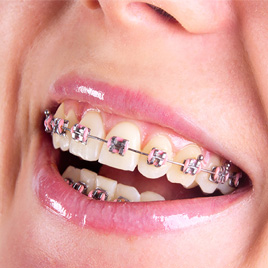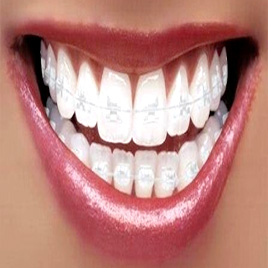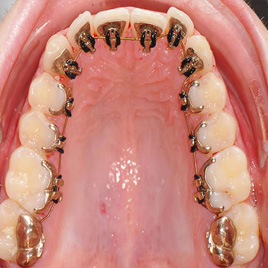
Confident Smiles Start Here-Experience the Best Braces Treatment in Jalandhar
Experience unparalleled dental care at Malhan Dental Clinic, where we offer the best braces treatment in Jalandhar. Our expert orthodontists are dedicated to providing top-notch dental solutions tailored to your unique needs. With a focus on precision and patient comfort, we specialize in offering advanced braces treatments that guarantee perfectly aligned teeth and a radiant smile. At Malhan Dental Clinic, we combine state-of-the-art technology with personalized care, ensuring that every patient receives the finest treatment available. Your journey to a confident smile begins with our skilled professionals and the best braces treatment in Jalandhar at Malhan Dental Clinic. Trust us to transform your smile and boost your confidence with our exceptional orthodontic services.
Every tooth in a man's head is more valuable than a diamond.
What Types of Braces Are Available?
Braces are indeed the solution for you, the dentist or orthodontist will prescribe an appliance specific for your needs. The braces may consist of bands, wires, and other fixed or removable corrective appliances. No one method works for everyone.
1. Metal braces/Traditional braces:- Metal brackets and wires that most people picture when they hear the word “braces.”
2. Ceramic Braces:- They have tooth-colored or clear brackets that blend in to teeth. Some even use tooth-colored wires to be even less noticeable.
3. Lingual Braces:- Same as traditional metal braces, except that the brackets and wires are placed on the inside of teeth.
4. Invisalign:- Series of 18 to 30 custom-made, mouth guard-like clear plastic aligners. The aligners are removable and are replaced every 2 weeks.
How Do Braces Work?
In their entirety, braces work by applying continuous pressure over a period of time to slowly move teeth in a specific direction. As the teeth move, the bone changes shape as pressure is applied. Braces are made up of the following components:
1). Brackets are the small squares that are bonded directly to the front of each tooth with a special dental bonding agent or are attached to orthodontic bands. Brackets act like handles, holding the arch wires that move the teeth. There are several types of brackets, including stainless steel and tooth-colored ceramic or plastic, which are often selected because they’re less obvious. Occasionally, brackets are cemented to the back of teeth, in order to hide them from view.
2). Orthodontic bands are stainless steel, clear, or tooth-colored materials that are cemented to the teeth with dental bonding agents. They wrap around each tooth to provide an anchor for the brackets. The clear or tooth-colored bands are more cosmetically appealing options but are more expensive than stainless steel. They are not used in all patients. Some people have only brackets and no bands.
3). Spacers are separators that fit between teeth to create a small space prior to placement of orthodontic bands.
4). Arch wires attach to the brackets and act as tracks to guide the movement of the teeth. Arch wires can be made of metal or be clear or tooth-colored.
5). Ties are small rubber rings or fine wires that fasten the arch wire to the brackets. They can be clear, metal, or colored.
6). A buccal tube on the band of the last tooth holds the end of the arch wire securely in place.
7). Tiny elastic rubber bands, called ligatures, hold the arch wires to the brackets.
8). Springs may be placed on the arch wires between brackets to push, pull, open, or close the spaces between teeth.
9). Two bands on the upper teeth may have headgear tubes on them to hold the facebow of the headgear in place. (A headgear is another tool used by orthodontists to aid in correcting irregularities of the teeth; see below)
10). Elastics or rubber bands attach to hooks on brackets and are worn between the upper and lower teeth in various ways. They apply pressure to move the upper teeth against the lower teeth to achieve a perfect fit of individual teeth.
11). Facebow headgear is the wire gadget that is used to move the upper molars back in the mouth to correct bite discrepancies and also to create room for crowded teeth. The facebow consists of an inner metal part shaped like a horseshoe that goes in the mouth, attaching to buccal tubes, and an outer part that goes around the outside of the face and is connected to a headgear strap.
Newer “mini-braces,” which are much smaller than traditional braces, may be an option for some. There is another method of straightening teeth that uses removable plastic retainers that may also work when crowding of the teeth is not too severe. Your orthodontist will discuss the various types of braces with you and determine which might be the best option for your situation.
For inquiries about the best braces treatment in Jalandhar, do not hesitate to get in touch with us at Malhan Dental Clinic. Our dedicated team of orthodontic experts is here to answer all your questions and provide detailed information about our specialized services. Your journey to a confident, perfectly aligned smile begins with a simple conversation. Reach out to us today to schedule an appointment or discuss your orthodontic needs. We are committed to delivering exceptional dental care and ensuring your experience with the best braces treatment in Jalandhar is seamless and comfortable. Contact us now, and let us guide you towards a brighter, more confident smile.
Type Of Braces
Metal Braces
Ceramic Braces
Lingual Braces
Invisalign Braces
Your Smile is Our Priority... We Design Smiles
Don’t skip your regular check-up for teeth. Book an appointment!







